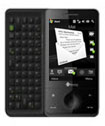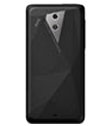The HTC G1 is known as the HTC Dream, T-Mobile G1 or Era G1 as well. The phone was released towards the tail end of 2008, and gained fame as it was the first phone to implemented Google's much anticipated Android mobile operating system.
The phone has done quite well in the last year, with HTC releasing a number of models that are evidently newer versions of the G1. The only glitches that have been reported are ones that users are facing with Android and not the phone.
Look, Design, Feel (/10)

The look is not very appealing, as it is a long oblong-shaped phone. The design is a little clunky, as the screen portion slides out to reveal a QWERTY keyboard underneath. The appearance is not elegant at all.
The phone retails in one of three colours: black, white or brown (now known as bronze). The colours are uninspiring at best, with the white being positively hideous. The finishes are not glossy so the phone lacks the sophisticated, sleek feel of its contemporaries.
Features (/10)

Perhaps one of the nicest features of the G1 is its large screen. As the screen opens, it does not flip nor does it merely slide upwards: it actually has a hinge that clicks the phone into one of the two possible positions. The hinge is visible when the screen is pushed or pulled into place. The orientation of the screen also changes with the movement, swapping into landscape mode when the QWERTY keyboard is visible.
One of the really great features of the Android operating system is the notification bar right at the top of the screen. The bar is visible throughout all applications running on the phone, and shows the user exactly what the current status quo is with unread email or messages, missed calls, IMs and even has a download status bar. Clicking on any one of the icons will open that particular application.
There is a feature known as the long-touch system, where if the user presses on a icon for a substantial bit of time, the system unlocks the position of the icon and allows the user to place it elsewhere.
The HTC G1 has the multiple desktops that are now being seen in mobile handsets. The user can just scroll from one desktop to the other seamlessly.
Connectivity (/10)
The phone is quad-band GSM, something that was revolutionary at the time the phone was released. The phone also supports HSPA and Wi-Fi, along with Bluetooth.
The micro USB jack also doubles up as an audio jack, but the audio jack is not the standard headphone jack. This is a feature that doesn't go down too well with users, as the option of using really great mp3 headphones with excellent sound quality is taken right off the table.
Performance (/10)
The performance is good, considering the phone debuted it 2008. It has 256 MB RAM, which is a sizeable chunk of memory. The battery life is average, with about 400 minutes of standby battery life with GSM and 350 for CDMA.
Value for Money (/10)
The phone is not unduly expensive, although one would have expected a significant drop in price now that there are many successors that are much better. However the price has remained the same.
Pros
+ Very responsive touch screen
+ Packs in Android, and therefore has great integration with other Google products.
+ The phone is open to applications and updates that are not necessarily marketed by the HTC online store, allowing the user the option to customize their phone according to their individual taste.
+ Intuitive touch screen with long-touch technology.
Cons
- The design is really unattractive.
- There is no standard headphone jack.
- The keyboard is difficult to manipulate as the keys are not easily distinguishable from each other.
 Téléchargement …
Téléchargement …
















